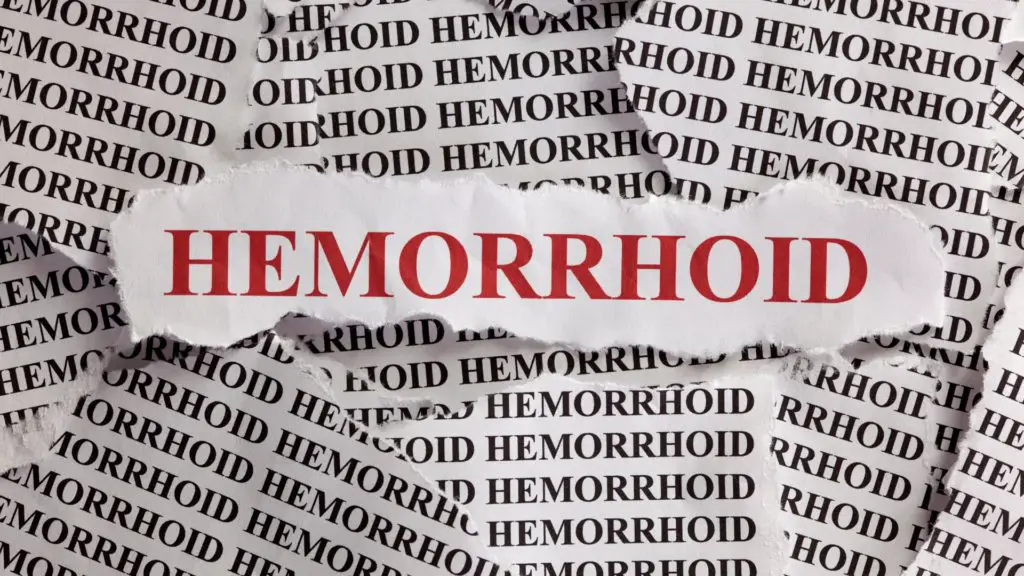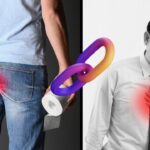It is always like this.
Going to the bathroom you noticed some bright red blood on the toilet paper and now you are in total panic because the internet offers you very bad diseases.
Stop for a moment. What if I told you that what happened to you is just the perfect result for a search by the keywords “How to tell if you have hemorrhoids“?
Hemorrhoids and fissures occur mainly with bleeding!
Rectal pain, the classic one that doesn’t make you sit up, can be totally absent if you have internal hemorrhoids.
How to tell if you have hemorrhoids
Let’s see together How to tell if you have hemorrhoids and how they are treated!
Below we introduce you to how to tell if you have internal hemorrhoids:
What are internal hemorrhoids?
We are used to thinking that hemorrhoids are those kind of “balls” that, when inflamed, can come out of the anus and bring out all the insults in the world for pain.
You will be happy to know that this is not the case.
Yes, because hemorrhoids don’t necessarily come out. In this case they are called internal hemorrhoids .
In fact, the correct name would be hemorrhoidal pathology.
In fact, you must know that we all have internal hemorrhoids . They are nothing more than veins located in the wall of the passage area between the rectum and the anal canal and, normally, they are used to help us maintain anal continence.
Basically, they serve to “hold back” at all times when we do not go to the bathroom!
When these structures become inflamed they tend to be painful. In this case we speak of a hemorrhoidal crisis .
Finally, if you chronically suffer from this problem, we can talk about full-fledged hemorrhoidal disease.
But what differentiates internal hemorrhoids from external hemorrhoids?
- There is a kind of line that separates the rectum from the anus, which is called the dentate line. Internal hemorrhoids originate above this line, external hemorrhoids below, closer to the anal orifice
- The differences are also in the symptoms (which we will see very soon!)
Classification of internal hemorrhoids
I’ll tell you a little secret: in reality the difference between internal and external hemorrhoids is more than anything else, educational.
Very often external hemorrhoids are only internal hemorrhoids which, after a first phase in which the inflammation remains limited to the canal, swell and “emerge” outside.
In medicine, internal hemorrhoids are classified into four degrees of severity:
- Grade 1
Hemorrhoidal veins are slightly congested; there is no prolapse and they remain inside the anal canal.
- Grade 2
The swelling increases.
There is a slight external prolapse which, after defecation, spontaneously reduces.
- Grade 3
Hemorrhoidal congestion is important.
Prolapsed hemorrhoids no longer shrink spontaneously but can be brought back inside manually .
- Grade 4
The hemorrhoids and the anal mucosa have prolapsed.
The prolapse is external and is not reducible. Thrombosed hemorrhoids may be present.
REMEMBER
A balanced diet in various nutrients is the first step – and the most useful – to prevent hemorrhoids, both internal and external!

Internal hemorrhoids: the causes
But why can something as natural as hemorrhoids become pathological?
Any situation that can lead to exhaustion of the anal mucosa can lead to the development of hemorrhoids!
The increase in pressure at the level of the hemorrhoidal plexus can also lead to the development of hemorrhoidal pathology.
Let’s see a summary of the most frequent causes of internal hemorrhoids:
- Constipation : Repeated exertion can increase the pressure in the hemorrhoidal veins. Over time, these problems can lead to swelling and inflammation.
- Diarrhea: even diarrhea can put a strain on your “delicate area” and predispose to inflammation of hemorrhoids
- Diet rich in fat and low in fiber: it makes intestinal transit of feces difficult
- Pregnancy and childbirth: the constant pressure on the pelvis exerted by the uterus that houses the fetus, can lead to the development of hemorrhoids in pregnancy. The strain of childbirth can contribute to the onset of the condition
- Obesity: the mechanisms are very similar to those of hemorrhoids in pregnancy, i.e. increased pelvic pressure
- Excessive sedentary lifestyle: the origin of the pain can also be a prolonged sitting position, very frequent in those who work in the office or at the computer.
DID YOU KNOW THAT
Sports that stress the anal area a lot, such as cycling and motorcycling, can also predispose to the development of hemorrhoidal disease.
Internal hemorrhoids: symptoms
Internal and external hemorrhoids can both cause bleeding with defecation.
What differentiates them, in addition to the degree of protrusion, is the fact that internal hemorrhoids are much more rarely associated with pain.
This, if present, is more related to some complications of hemorrhoidal disease than to internal hemorrhoids.
Let’s go deeper (bad joke, I know):
- The # 1 symptom of internal hemorrhoids is bleeding.
You may see bright red blood on toilet paper or even during defecation if bleeding is heavy.
In the early stages you may also have bloodless hemorrhoids but it is very difficult for you to notice that you have them at this stage.
Bleeding from hemorrhoids is the real wake-up call!
- Pain is an infrequent symptom
The area affected by internal hemorrhoids does not have many nerve endings. If you are in a lot of pain, it is more likely that you have anal fissures or external hemorrhoids.
Pain can also become important in the case of complications of hemorrhoids, such as the fearful thrombosed hemorrhoids.
Simply put, it means that a clot has filled the hemorrhoidal vein, which will be swollen, bluish and very painful .
- Discomfort and clutter in the anal area
- Itchy buttocks
ATTENTION
Hemorrhoid blood is always bright red! Dark bleeding often indicates that the blood has been partially digested and, therefore, the source of the bleeding is higher. Hemorrhoids, on the other hand, are already almost on the outside.
Treatments for internal hemorrhoids
Let’s clarify it right away: for internal hemorrhoids the most important thing of all is prevention .
You have to identify what is wrong with your habits to understand how to “disinfect” the body, in particular the anal and perianal area.
The way of reasoning must be this:
- Do I spend a lot of time sitting? I have to try to take frequent breaks where I get up and take small walks!
- Am I low in fiber? I need to eat more fruits and vegetables!
- Do I drink little? I always have to carry a bottle of water with me to make bowel movements easier!
In this article we talked about the remedies for external hemorrhoids, which are also good for internal ones.
Only after you have improved your diet and lifestyle can you think about drug treatments that provide relief, it is true, but as soon as the effect passes you return to the starting point.
You can try with:
- Supplements for hemorrhoids , which improve circulation and strengthen the walls of the veins (for example, you can try Diosmin )
- Swollen external hemorrhoid ointment
- Natural remedies for hemorrhoids such as bromelain or aloe vera, powerful anti-inflammatories
If, despite all these precautions, the hemorrhoids persist, the treatment of choice is surgery.
There are different types of hemorrhoid treatment surgery:
- Hemorrhoidectomy
- Hemorrhoidal dearterialization
- Obliteration
Each of these techniques is relatively painless and very fast to recover nowadays . They also do not require full colonoscopy but are performed on an outpatient basis.
In short: DO NOT BE AFRAID and think about how well you will be without those annoying hemorrhoids!






